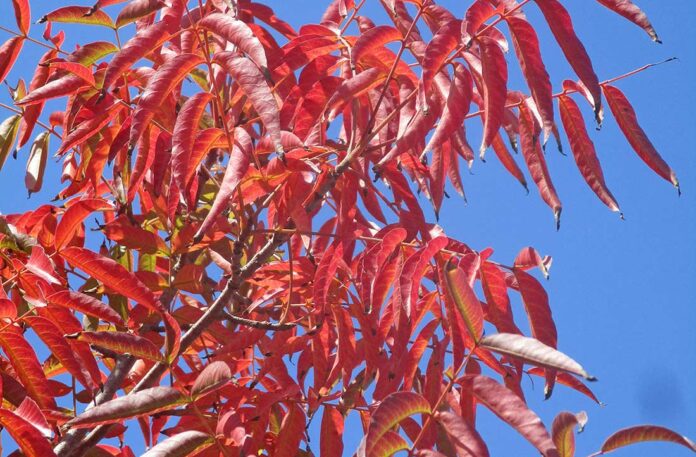Autumn is also fall here. Actually, ‘fall’ is the more popular name. It had been the popular name in England during the Sixteenth Century. The (generally) French name of “autumn” became more common there during the Seventeenth Century. Yet, both names remained in use in the American Colonies. That is why autumn foliar color is more simply fall color.
The natural fall color in New England, the Appalachian Mountains, the Rocky Mountains and the Great North Woods is famously exquisite. So many of the native deciduous trees develop remarkable fall color in response to local weather conditions. These same trees might not get sufficient chill to develop comparable fall color in milder climates of Florida.
In most regions of California, natural fall color is limited by the ability of native species to develop such color. Bigleaf maple and the various poplars turn bright yellow with a slight chill, but are not abundant. Even when chilled, the foliage of most other native deciduous trees simply shrivels and falls without much color. Most of the native trees are evergreen.
Therefore, most of the best local fall color is provided by exotic (nonnative) tree species. Such trees not only develop remarkable fall color, but do so in response to minimal chill. Sweetgum, flowering pear, Chinese pistache and ginkgo are four trees that most reliably develop brilliant fall color where winter weather is mild. None are native. All are popular.
Ginkgo turns brilliant yellow. The other three display various colors that range from bright yellow, to fiery orange, to rich red and burgundy. Their colorful foliage lingers longer than that of other deciduous trees. Sweetgum and flowering pear might retain fall color until it succumbs to rain in winter. Of course, these are not the only options for reliable fall color.
No tree is perfect. Although very colorful in autumn, sweetgum is notoriously structurally deficient, and produces obnoxiously spiked fruiting structures. Flowering pear is innately susceptible to fire blight. All deciduous trees drop leaves, which need raking. Trees must conform to their situational limitations, as well as their particular landscape applications.
Highlight: Chinese pistache
Those who crave fall color in mild climates should appreciate Chinese pistache, Pistacia chinensis. It is happy to provide fiery yellow, orange and red color in response to a slight chill. Actually, it retains its colorful foliage later into the season with mild chill than it does with frosty weather. Rain eventually dislodges all of its deciduous foliage through winter.
Because it is so resilient to harsh situations, Chinese pistache is popular as a street tree. Pruning is necessary to establish adequate clearance of broad limbs over roadways and sidewalks. Since roots can be shallow with regular watering, root barriers should protect nearby pavement. However, established trees do not need regular watering, if any at all.
Old Chinese pistache trees, as well as those that grow wild from seed, are either male or female. Female trees produce tiny but annoyingly abundant fruit. Modern cultivars are all male, and therefore fruitless. They may get more than forty feet tall, with broad canopies. The pinnately compound leaves are just about eight inches long.
Horticulturist Tony Tomeo can be contacted at tonytomeo.com.










